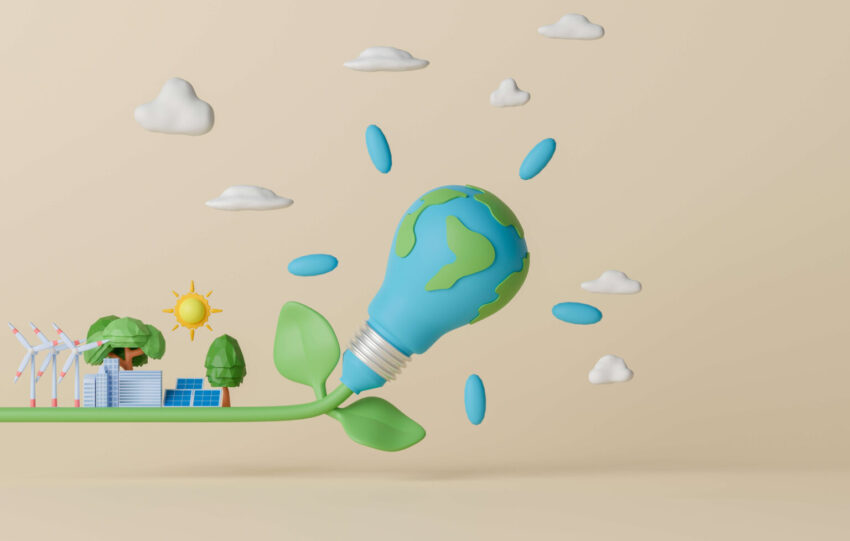A heterogeneous workforce is a valuable, often underappreciated asset for an organization. Even in the age of AI and automation, it is people whose ideas, vision, and work make up a business. In the past, companies forewent the importance of diversity, equity, and inclusion (DEI) in pursuit of the bottom line, but no more. With policies of equality gaining footing and marginalized voices getting stronger and more urgent, organizations have begun to veer towards true equality.
Organizations today acknowledge that DEI makes the workplace better and improves the bottom line, but many still lack the strategic impulse that can make this a reality. True, there isn’t a one-size-fits-all approach here, but a few scalable efforts can prove to be the turning point.
D, E, and I – a win-win concept
“A lot of work some companies have done in the past has focused quite a bit on diversity and not on equity and inclusion. You have to foster increased inclusion and attain equity to prosper diversity.”

DEI is a single concept, but with subtle differences between the meanings of its component ideas:
Diversity – Going beyond simplistic classifications of race, gender, disabilities, etc., it includes those with different skills, belief systems, and personalities.
Equity – A workplace of equity provides equal opportunities and scope for advancement to all people, irrespective of gender, race, or other specifications.
Inclusion – A welcoming work environment where all differences are embraced, where people are respected and considered an integral part of the organization they represent. That feeling of belonging improves the workplace as it breeds positivity and a work culture to emulate. A fun workplace is a cohesive, coherent force that produces the best results (top consultancy McKinsey says this too).
The talk of DEI became more commonplace in the year 2020, with the murder of George Floyd and the ‘Black Lives Matter’ movement. This quest has been in the works for several years, though. Employees across the globe, including those from Google, IBM, and Microsoft have pushed for this, with corporate policies complying. But have all these workplaces made this a reality?
The remote work culture and the Great Resignation are trendsetters suggesting that it’s high time companies took this much-needed pivot. Clearly, they emphasize the role that organizations must play in building a more harmonious, fair society where no one is made to feel like a victim due to their unique differences. Employees, every one of them, bring various qualities and character traits that make them expectant of a more integrated workforce. Workplaces that don’t offer them this may win on homogeneity while losing out on quality members.
“If you’re with an organization that isn’t as diverse as what you have come to know the world to be, or as you consider yourself to be as an individual, you’re questioning why those values aren’t reflected in the organization.”

A Glassdoor review suggests that 67% of job seekers look for opportunities in a workplace known for its integrated culture. A reputed business magazine study finds that diverse teams make better decisions up to 87% of the time. A 2015 Harvard Business School alumni survey suggests that 76% of senior executives believe that a more diverse workforce improves the organization’s financial performance. They also found that organizations with a diverse task force have 70% more potential to capture new markets.
Out in the wild, metaphorically, people spread across the spectrum of background and behavior, that sameness in the workplace induces artificiality, a lack of creativity, and inexplicable sterility. They don’t feel challenged and thus can’t thrive, a major impediment to progress.
“Variety is the spice of life and helps to enhance each piece of the puzzle. Everyone can contribute in a different way and there is always a need to look at things in a different way than how it’s always been done!”
Inculcating a DEI work Culture

“To make this a movement, and not just a moment, organizations must take a close look at what they’re doing internally and ask: ‘Who are we hiring?’, ‘Who are we promoting?’ and ‘Can we make sure we’re distributing opportunities more fairly?’”

DEI is a system that requires rigorous individuality in execution. It is a long-haul effort that requires a momentous shift in mindset before we can ever set our minds towards the cause. The preliminary steps involve breaking chains such as unconscious bias or stereotypes through an educated thought process and getting the entire organization aligned with the idea for a change. Followed by this, organizations may do well to execute these basic measures:
Informed beginnings
You know what DEI is. But there are so many intricacies involved in this process that you should know where you are heading. As already discussed, try designating a team with expertise in DEI incorporation. For instance, you may know women sometimes feel alienated when underrepresented in the office compared to men, but how prevalent is this? In what specific instances does this happen? Next, roll out your own strategies which are backed up by evidence and hardcore research.

A reputed business magazine study finds that diverse teams make better decisions up to 87% of the time. A 2015 Harvard Business School survey suggests that organizations with a diverse task force have 70% more potential to capture new markets
Data analysis
Data crucially helps you understand your organization’s demographics, using which you may set benchmarks and metrics for achieving the DEI. Maybe you have the policies in place, but do your employee numbers reflect that? Do your attrition levels seem skewed towards employees from lower castes or marginalized communities? Use data to map these factors, relationship patterns, and interactions to get a clearer view.
Set a measurable target
Use the data analyzed to set a measurable target. You may start this by defining the metrics – such as Adidas’ hiring policy to hire from underrepresented groups. Or you may measure DEI progress by going the Microsoft route, which based its entire bonus structure on successfully achieving diversity metrics.
Explore unchartered recruitment
“Our programs have expanded diversity and inclusion by focusing on removing social and economic disparity. We’ve opened offices in rural areas in multiple countries to bring economic opportunity. We also hire students who may not have the opportunity to go to college and train them to be productive professionals in technology. This helps us gain loyal employees and improve retention.”

Go beyond your traditional recruitment routes and tap into talent areas you may have previously not explored. This can be initiated by website postings, advertising in certain publications, or partnering with dedicated organizations to do outreach programs. How about assigning someone in your organization who can own this mantle?
Microsoft, the tech and software giant, tops the global chart for DEI initiatives. The Washington-based organization works with an employee resource group initiated by its workers. Thanks to their efforts, the company is a leading example of bridging the gap between the promise and reality of DEI, as it sets itself up for the task through diversity and inclusion-based targets, supported by a policy that addresses workplace diversity and inclusion. A 2020 data indicates that 39.7 of its board comprises racial and ethnic minorities, and 49.8% of its workforce includes racial or ethnic minorities.
Fast food restaurant McDonald’s announced low-interest loans of $250 million to new franchisees and encouraged diverse ownership of its restaurants in the United States. The restaurant chain also agreed with its executives for a tie-up with their annual incentives to increase the share of women and racial minorities across corporate leadership roles by 2025.
The UAE, through some of its recent initiatives, is taking a great leap towards implementing DEI in its workplaces. Recently, 3M Middle East & Africa partnered with The American Chamber of Commerce in Dubai (AmCham Dubai) to host ‘The Design of Inclusion’, a symposium with a commitment to make the future of the UAE workplace equitable. The event brought together senior business leaders from local and international organizations, including FedEx and Visa.
“Today’s discussions are intended to help leaders, especially female leaders, shape the workplaces of the future. The public and private sectors working together can create more equitable and inclusive opportunities for everyone to build a community where not only organizations, but individuals can truly thrive.”

Talk it out
The ability to communicate across diverse backgrounds and perspectives holds the key to productive relationships. In addition, productive relationships create empathy, a significant factor in unlocking DEI. After all, the essence of a great work culture lies in conversations and relationship-building. Some of the effective communication mechanisms include on-feedback mechanism, leadership roundtables, and team huddles.
In the same vein of transparency and communication, we must note that new employees take time to get acquainted with the work culture, irrespective of how polished a culture may be. Short, one-week or single-day onboarding structure has contributed to uncontrollable attrition rates.
Remember, your candidates assess you the same way you evaluate them. Every senior executive and HR personnel must ensure that those who work for you wish to do so in the immediate and long term. Try incorporating frequent review and feedback sessions and get the pulse of your employees. This way, organizations needn’t lose potential talents that can bring diverse, unique ideas into the portfolio.
The DEI Pledge
The pandemic and some of the events that coincided with it brought the world to a standstill. As the new normal unfolds, it is time for the great awakening, for companies to realize that they have to bridge the gap to make our workplaces better. The journey towards this will vary, but together we can create a world where unity prevails amidst diversity.


